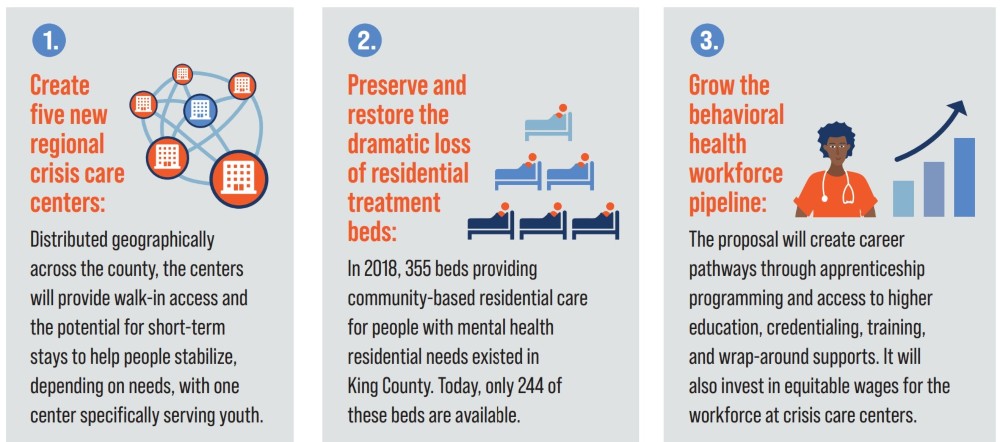[Eds. Note: This piece was first published as a newsletter penned by Ben Anderstone, a political consultant at Progressive Strategies NW, and is reposted here at Post Alley, in lightly modified form, with Ben’s permission.]
Seattle’s February social housing ballot measure passed the city with 57 percent of the vote. The April Crisis Center Levy, passed by King County voters, did way better, hitting 74 percent support in Seattle.
Despite that, there are big signs of strained patience. The Crisis Center Levy failed outside of Seattle, receiving only 46 percent of the vote outside the city limits. Our statistical analysis suggests that the February 2023 Seattle social housing initiative would have received about 41 percent countywide, and just 33 percent outside of Seattle.

King County Crisis Center levy: Supportive precincts in blue; darker precincts were more supportive. Click for a bigger version.
Given those results, here are my key takeaways:
- King County voters will spend money on social services, but only selectively. In Seattle, many voters voted “Yes” on the April Crisis Center Levy after voting “No” on the February Housing Levy. We estimate at least one in five voters split their preferences.
- Seattle moderates are willing to spend more. Moderates elsewhere are skeptical. Upscale, moderate Seattle strongholds like Madison Park, Laurelhurst, and Magnolia were more supportive of the Crisis Center Levy than diverse, progressive bastions like Tukwila, White Center, and Skyway. Outside of Seattle, there’s less of an appetite for more spending, even among more progressive Democrats.
- There are a lot of swing voters on these issues. A lot of Seattle voters voted “No” in February and “Yes” In April. These voters were disproportionately well-off, college-educated, and older, and overwhelmingly supported “center lane” candidates in Seattle city races. They are key to passing social service measures in King County.
Some other recent Washington State political developments that are noteworthy:
- The Democrats’ Latino problem spreads to Washington. In 2020, many areas with Hispanic majorities saw significant declines for Democrats. Washington state was spared; Joe Biden even flipped the city of Yakima. But by 2022, things changed, and the Latino vote in Washington swung right.
- The bad economy is hurting local school measures. So far, only 18% of Washington State school bonds have passed this year. That’s the lowest rate since 2011, and the second-lowest rate in recent history. Opinion polling suggests that factors are a mix of the poor economy and increasing conservative skepticism of public education as an institution.
- Washington State population growth bucks trend. Despite Washington State’s struggles and cuts among tech employers, we remain one of the few blue states posting above-average growth. King County’s growth continues to be decent, partly due to construction projects started before the slow-down. Another factor: making babies. Washington’s birth rate remains above neighboring Oregon, which may have to give back its recently gained sixth congressional district.

Exactly……who’s paying for all this tax and spend nonsense!
Socially liberal yet fiscally conservative
Sad to say, put the word “homeless” on a Seattle “money ballot” and it will pass. And the money will be gone without accountability.